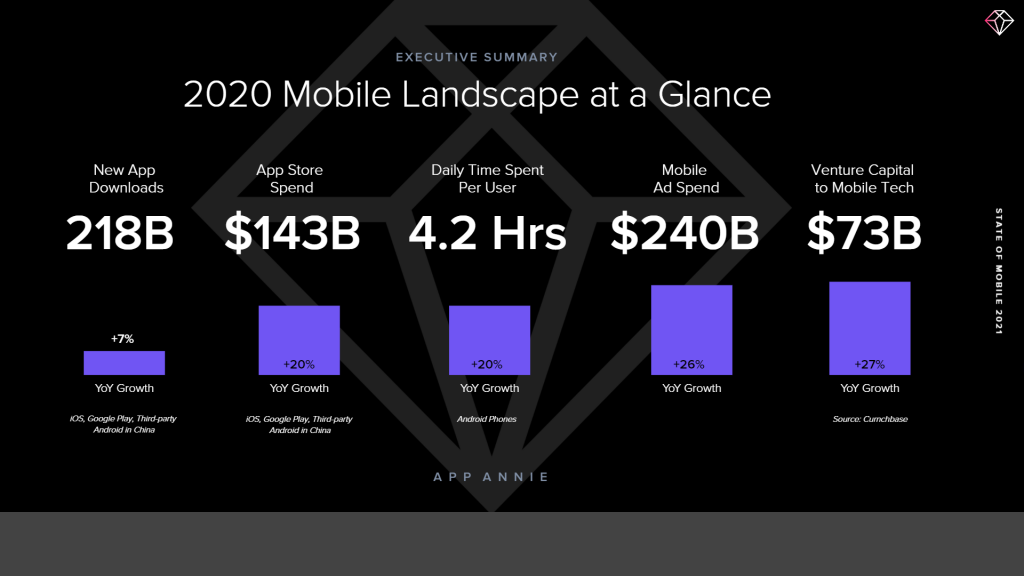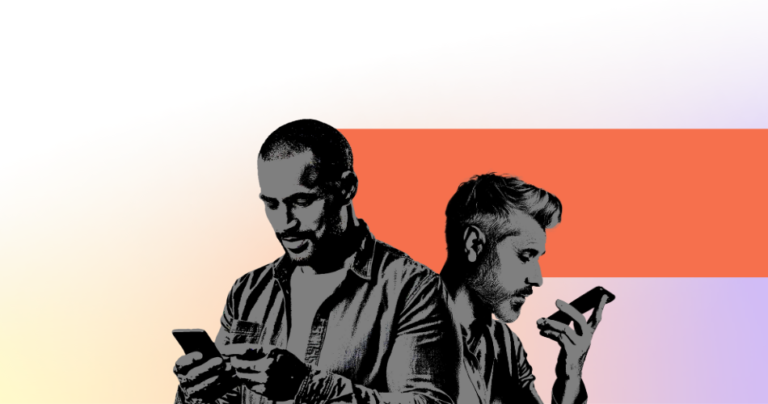
Even before the year 2020 began, mobile apps were considered essential to succeed with customers. Smartphone usage was rising steadily across the world. In fact, web usage on mobile phones in 2019 was more than the usage on desktops & laptops combined. Enter 2020, and we encountered one of its kind pandemics. People were forced to live their lives from the walled comfort of their homes. Work, Play, Health, Shopping, everything went online! This gave an unexpected boost to the usage of people’s most trusted companion – the smartphone.
Smartphone usage gave a tremendous boost to app usage, as on average, a smartphone user spends more than 88% of their time on apps.
There were expected winners, like the work-from-home enabling apps, mobile games, grocery shopping apps and health-related apps, and then there were unexpected winners too, like the new breed of contact tracing apps.
While the coronavirus pandemic has caused more than 2.69 million deaths worldwide, we continue to live our lives, and this change has become the new normal.
A growing number of countries worldwide have implemented social distancing and lockdown measures to check the novel coronavirus’s spread. People were amazed to see how smartphones helped us deal with such harsh lockdown restrictions.
The Apprising of 2020
The global usage of mobile devices in the first half of 2020 stood at about 1.6 trillion hours. A new report from App Annie analyzes how the usage in 2019 compared to the stats during the COVID-19 pandemic in 2020 and how it affects companies with a mobile-first approach.

According to the report, mobile usage increased globally. Monthly time spent in mobile apps grew 40% year over year in Q2 2020, reaching an all-time monthly high of over 200 billion hours during April 2020.
Google Play downloads grew to 25 billion in Q2 2020, a 10% increase vs Q2 2019. iOS downloads grew 20% vs Q2 2019 to nearly 10 billion new downloads for the quarter.
The tremendous growth in app usage and downloads fuelled record-breaking revenue. In Q2 2020, consumers spent $27 billion on apps. iOS grew 15% year on year to reach $17 billion in revenue, while Android grew by 25% to reach $10 billion in revenue.
A positive effect of the pandemic was clearly seen on the mobile apps.
How is a virus helping app usage?

Stats indicate a massive jump in every app-related criteria. The major driving force for this increment has been the coronavirus. Let’s see how a virus is being a catalyst in smartphone app usage.
By the end of April 2020, more than 3.9 billion people, or half of the world’s population, were mandated to stay at home by their governments. Businesses and individuals were quick to adapt to the new normal and changed their work and living habits according to the lockdown restrictions. Fortunately, the app ecosystem scaled fast to support the sudden rise in users, with little to no hiccups.
As people started working from home, team productivity apps such as Zoom Cloud Meetings, Google Meet, Microsoft Teams & Adobe Suite rose to the top 4 most downloaded apps in the Business and Productivity segments. This was mainly due to their existing authority in the computer world.
Most of the developing world has better smartphone penetration than the computer install base; this was another factor in the higher mobile apps adoption rate. While business app usage in the second quarter was up 220% from the fourth quarter of 2019, India saw an increase of 450%.
Furthermore, popular app developers did not focus too much on revenue generation opportunity. Zoom Cloud Meetings, Google Meet & Microsoft Teams lifted most of the restrictions from free tier plans and offered premium services to educational institutes at no additional cost.
With no detractor to restrict their usage, business and productivity apps’ popularity blew up like nothing seen before.
Another category that gained the most was the food and grocery apps. None of the governments around the world restricted sales and distribution of food and grocery. Obviously, food is essential for survival, and its consumption cannot be restricted or delayed.
Contact-less payments and home delivery of food while maintaining strict social distancing led to a drastic change in the ways people shopped for groceries. Gone were the days of handpicking fresh fruits from the supermarket aisle; shopping was now devoid of touch and any form of contact.
Educational institutions closed their campuses and switched to remote learning. Many Universities are still conducting online lectures and webinars through video conferencing apps such as Zoom, Skype, Google Duo, WhatsApp, and Facebook Video calls. Plus, there are independent online education apps like edX, Udemy, Coursera, etc., that are helping students from all around the world to get self-paced education.
With gyms being shut due to them posing a higher risk of spreading the virus, fitness enthusiasts flocked to fitness apps. Many gym instructors and sports coaches started taking personalized fitness training to live through apps; this trend saw keen interest from bodybuilders and sedentary workers who were alarmed by sudden weight gain during the pandemic. Overall, fitness apps saw a 67% increase in usage compared to the previous year.
Doctor consultations went online too. Practo, an Indian consultation app, saw a 500% jump in online consultations through in-app video calls. The United States saw a 154% increase in a telehealth or online consultations during 2020.
With lockdown on movie theatres, parks and sports events, consumer spending on online games, social and entertainment categories increased. Games saw a record 14 billion downloads in Q2, 2020. These categories also saw the most substantial year-over-year growth in revenue. Growth in the Entertainment category was driven mainly by Disney+ and Twitch, a live streaming vertical network of gamers.
Social media apps like Facebook, WhatsApp, Twitter, and Instagram became lifesavers when social distancing rules were announced. People met each other through Facebook chats, zoom cloud meetings and skype video calls. An increase in social media usage also inspired creative artists to show their work of art on social media platforms like TikTok, YouTube and Instagram.
The discussion will be incomplete without mentioning the unsung heroes of the coronavirus pandemic. These were the apps specifically designed to help us win over the pandemic and reduce the loss of lives through contact tracing. India’s Aarogya Setu, France’s StopCovid, Australia’s COVIDSafe, Germany’s Corona-Warn, Italy’s Immuni and Ireland’s COVID Tracker are a few popular ones from the lot.
Have you lost the winning opportunity?
Many businesses ask us this question – Is it too late to build an app for my business? Will it be worth building an app now?
The answer is No & Yes. No, it is not late, and it will never be too late to start something good. And yes, it is worth having your own winning app.
The smartphones and their app-based ecosystem are here to stay for an unforeseeable timeframe. With 1.6 trillion hours of app usage every year, there are many opportunities for good apps to stand out and succeed.
Closed group, social media apps like House Party & Clubhouse are gaining popularity as people move away from overcrowded social media giants. We expect 2021 and beyond to be dominated by apps around smaller communities sharing a common niche. Take the example of Brightly, an eco-friendly lifestyle app backed by an awesome community of eco-conscious consumers. Brightly is thriving today, almost on autopilot due to the efforts of an entire community behind it.
Smartphone sales show no signs of slowing down, and 5G deployment is picking up the pace. Ultrafast internet through 5G will open pandora’s box of innovative ideas for brands to come up with. There is no better time than now to join the winning team.







